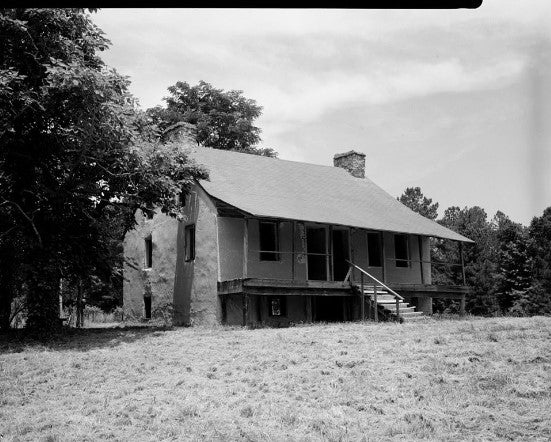In McDuffie County sits a lonely building off of a dirt road that seems forgotten to time. While the “Rock House” may look like a relic, it is one of the last remaining vestiges of the once thriving town of Wrightsboro, and the old building is set to be renovated back to what it looked like in its heyday.
Rock House is one of the oldest structures in Georgia and has ties to the U.S. presidency.
A decade before the American Revolution, the Quakers living in North Carolina had had their fill of royal Gov. William Tryon, who enacted his own version of the Stamp Act before Parliament passed the act officially in 1764.
According to Pearl Baker, in her book The Story of Wrightsboro 1768 – 1964, the governor began charging a three pound tax for a stamp on wedding licenses. Imports, property and papers were all taxed.
The Quakers were incensed over the fact that the governor would exempt his friends from the tax, but would seize their livestock if the tax wasn’t paid.
In 1768, about 40 Quaker families decided to migrate to Georgia, where the local Creek Indians had recently sold land to the colonies to wipe out their debt to local traders, according to Baker. The group ended up in McDuffie County and named their settlement “Wrightsboro.”
Many years later, a man by the name of Thomas Ansley relocated from his native New Jersey to Wrightsboro. Although not a Quaker, Ansley found the area to be perfect for farming.
When war broke out on the continent, Ansley did not serve as a soldier, likely due to his age, but aided the Continental Army by foraging and driving cattle.
According to Alan Smith, president of the Rock House Advisory Committee, after the war, Ansley was granted even more land as a thank you by the newly independent government.
“He didn’t run a plantation or anything. He was more of a subsistence farmer. He may have grown some cotton, but it wouldn’t have been on a large scale,” Smith said.
Perhaps longing for a reminder of his former home in New Jersey, Ansley decided against building the typical wood frame house and instead used rock from a nearby quarry to build his house out of stone, which was a popular building material up North.
Most sources cite the Rock House as having been built around 1785; however, Smith says that studies conducted by the RHAC have determined that the house was built much later in 1795.

“We conducted a dendrology study that looks at the rings within the wood and compares them with other timber of the time, and we are pretty confident those trees were felled in 1795,” Smith said.
Interestingly, the timber was not left out for a year to season. Rather, the wood was green when the roof of the Rock House was constructed. Smith says the “brace beam” technique of building used green wood so that as the sap dried, it hardened into glue, making the building more sturdy.
After the war, Ansley led a quiet, unremarkable life where he enjoyed his little farm and the company of his Quaker neighbors. He is buried in the Wrightsboro Cemetery, which is near the Rock House.
The house was renovated in 1981, but since that time it has fallen into disrepair and become the victim of vandals.
According to Smith, the land was sold to McDuffie County in 2018 as a way of saving the historic property.
“Grants for private groups were drying up, and we felt it was best to turn it to the county,” Smith said.
So far, a security fence has been installed and the county has raised around $750,000 to perform a full restoration of the house and the nearby cemetery.
Smith says the building will be restored to its 1810 appearance when the current windows were installed and will become a destination point with a museum on site, a gazebo and walking trails. The house, which will remain unelectrified, will serve as a site for receptions.
While Thomas Ansley might have led an unremarkable life, the same cannot be said of his progeny. Ansley’s grandson, Wiley Carter, fled the North in 1845, after he murdered a man in a gunfight over a property dispute.
Smith says that Carter wasn’t a criminal, and the historic record reflects that the man he killed may have gotten what he deserved, since Carter was acquitted in the death.
Carter moved into the Rock House, which he had inherited, for a period and remained in Georgia for the rest of his life.
Wiley Carter was the great-great grandfather of former U.S. President Jimmie Carter.
…And that is something you may not have known.
Scott Hudson is the Senior Investigative Reporter and Editorial Page Editor for The Augusta Press. Reach him at scott@theaugustapress.com












